A plane mirror M is arranged parallel to a wall W at a distance l from it. The light produced by a point source S kept on the wall is reflected by the mirror and produces a patch of light on the wall. The mirroo moves with velocity v towards the wall.
Which of the following statement(s) is/are correct? 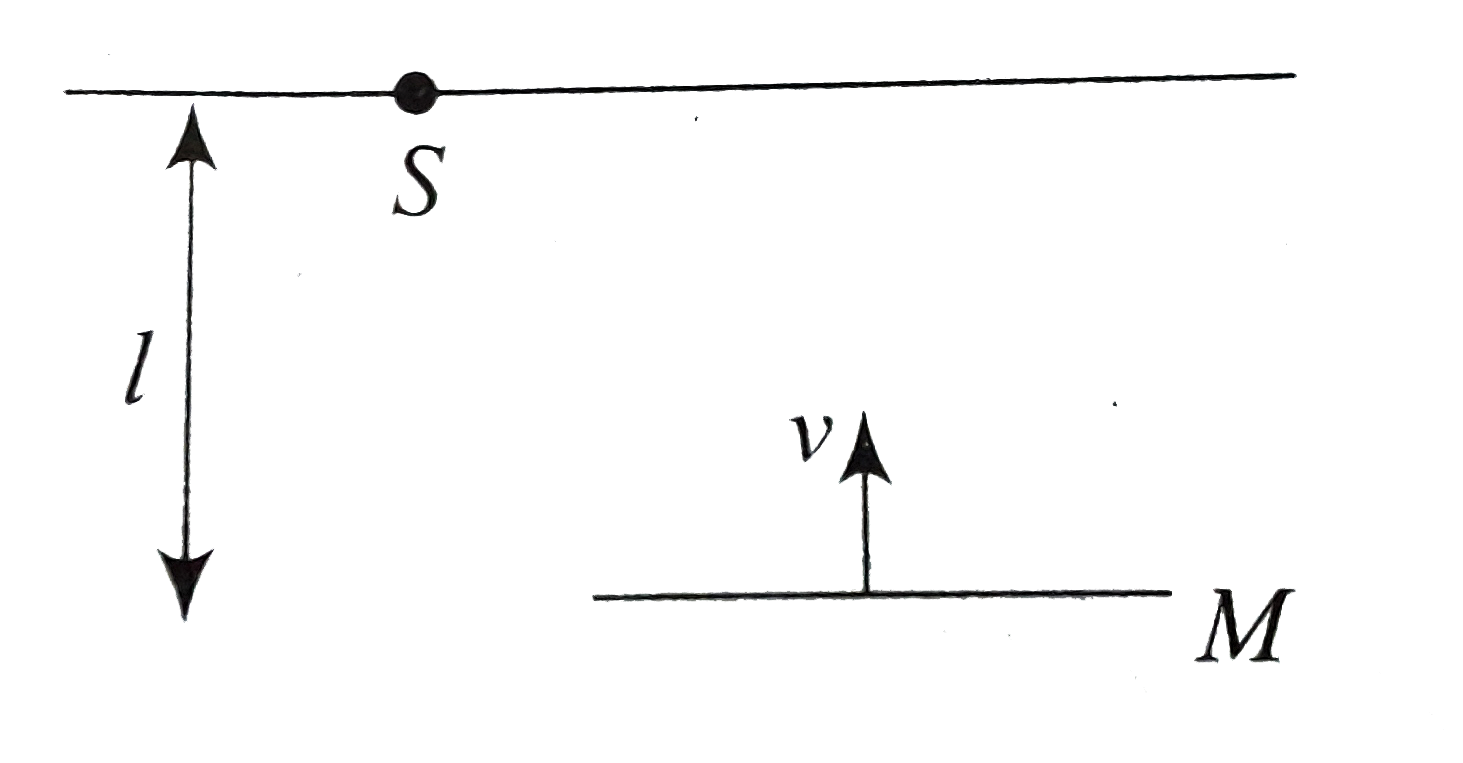
The patch of light will move with speed v on the wall
The patch of light will not move on the wall
As the mirror comes closer, the patch of light will become larger and shift away from the wall with speed larger than v
The size of the patch of light on the wall remains the same
The correct Answer is:b.,d.
From the above ray diagram, it is clear that the option (b) and (d) are correct.
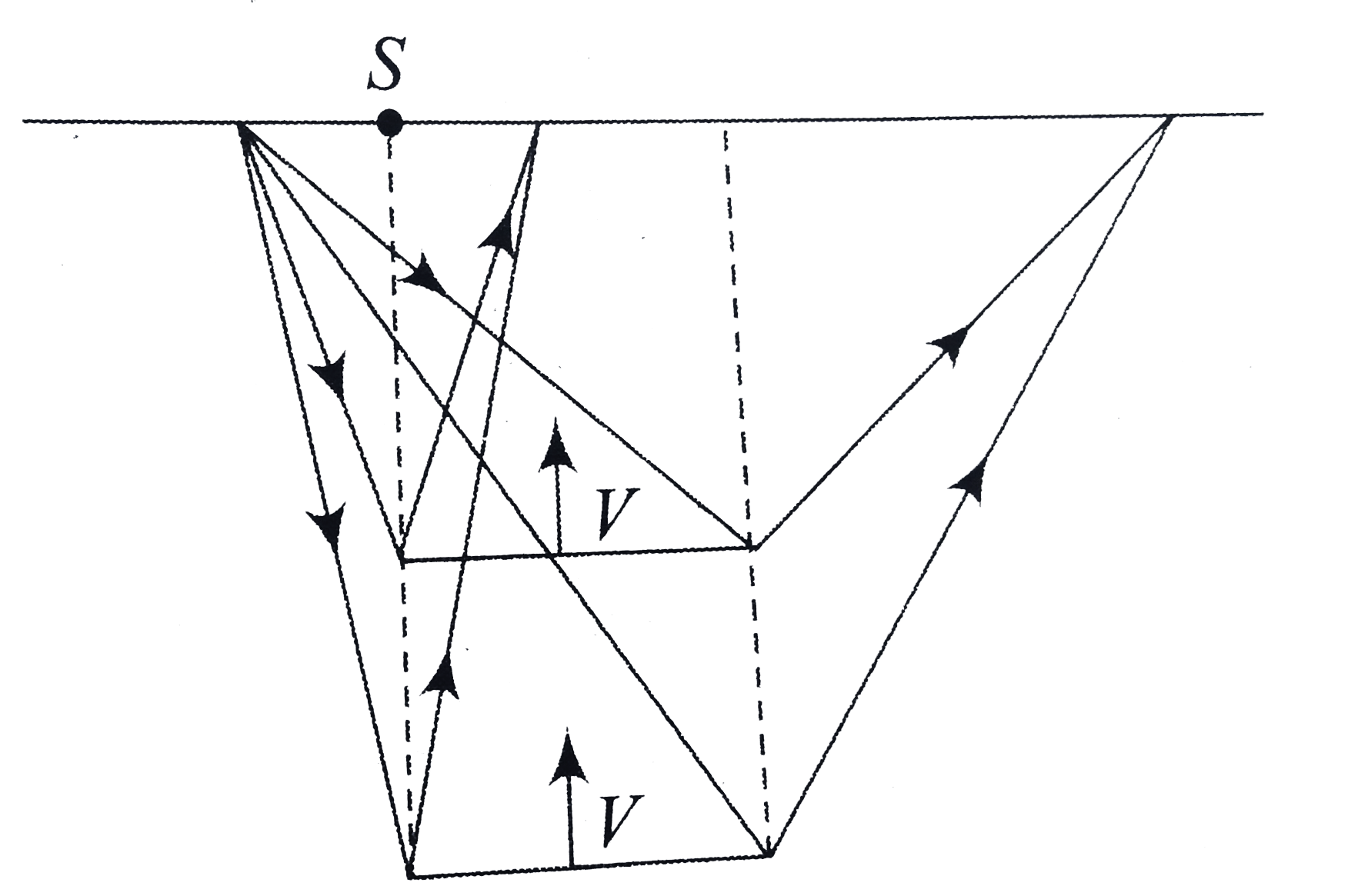
Topper's Solved these Questions
- BOOK - CENGAGE PHYSICSCHAPTER - GEOMETRICAL OPTICSEXERCISE - Assertion-Reasoninig2videos
GEOMETRICAL OPTICS
- BOOK - CENGAGE PHYSICSCHAPTER - GEOMETRICAL OPTICSEXERCISE - Linked Comprehension51videos
GEOMETRICAL OPTICS
- BOOK - CENGAGE PHYSICSCHAPTER - GEOMETRICAL OPTICSEXERCISE - Subjective26videos
GEOMETRICAL OPTICS
- BOOK - CENGAGE PHYSICSCHAPTER - FRICTIONEXERCISE - QUESTION BANK1videos
FRICTION
- BOOK - CENGAGE PHYSICSCHAPTER - GRAVITATIONEXERCISE - Question Bank39videos
GRAVITATION
Similar Questions
Figure shows a torch sending a parallel beam of light fixed on a wall and a plane mirror which forms a spot on the wall. As the mirror moves towards the wall, the spot on the wall moves
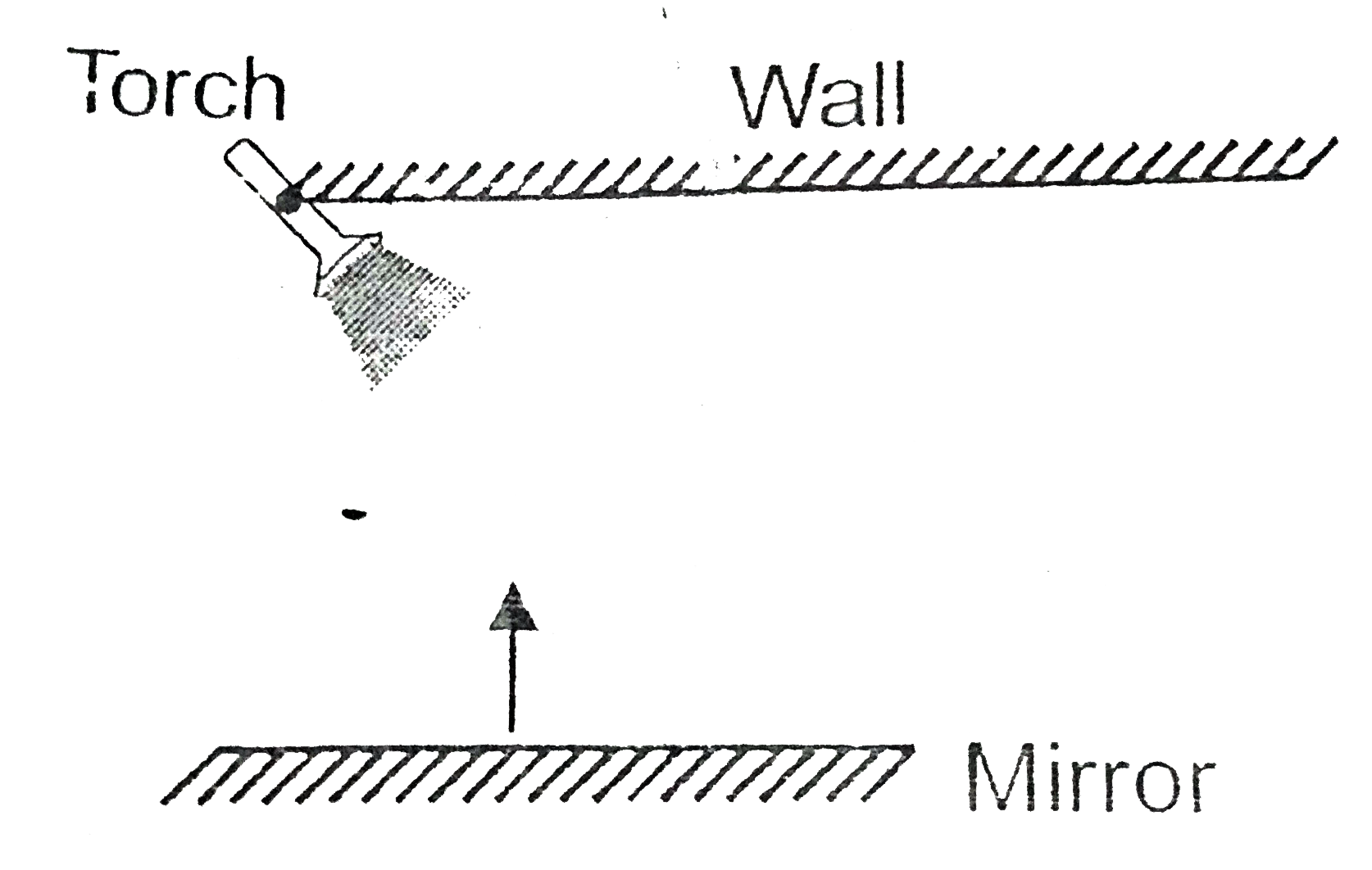 View Solution
View SolutionThe mirror of length L moves horizontally as shown in the figure with a velocity v. The mirror is illuminated bya point source of light 'P' placed on the ground. The rate at which the length of the light spot on the ground increases is :
 View Solution
View Solution
Knowledge Check
- Question 1 - Select One
On a particle moving on a circular path with constant speed v, light is thrown from a projectors placed at the centre of the circular path. The shadow of the particle is formed on the wall. The velocity of shadow up the wall is
 Avsec2φBvcos2φCvcosφDNone of these
Avsec2φBvcos2φCvcosφDNone of these - Question 2 - Select One
A point source of light 'S' at a distance d from the screen A produces light intensity I0 at the centre of the screen. If a completely reflecting mirror M is placed at a distance d behind the source as shown in the figure, find the intensity at the centre of the screen
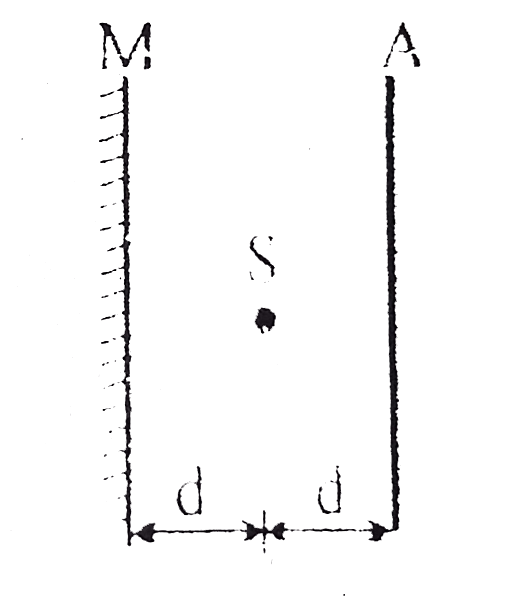 A910I0B109I0C89I0D98I0
A910I0B109I0C89I0D98I0 - Question 3 - Select One
A point source of light 'S' at a distance d from the screen A produces light intensity I0 at the centre of the screen. If a completely reflecting mirror M is placed at a distance d behind the source as shown in the figure, find the intensity at the centre of the screen
 A910I0B109I0C89I0D98I0
A910I0B109I0C89I0D98I0
A lamp of luminous intensity 100 cd is held at a distance of 2 m from a vertical wall. A plane mirror is fixexd on the opposite wall which is at a distance of 4 m from the lamp. Calculate the illumainance on the wall opposite to the mirror at a point on the horizontal line through the lamp. Also calculate the luminous flux on a small area or 0.02m2 surrounding the point.
View SolutionA light ray I is incident on a plane mirror M.The mirror is rotated in the direction as shown in the figure by an arrow at frequency 9πrev/sec,The light reflected by the mirror is received on the wall W at a distance 10mfrom the axis of rotation .When the angle of incidence becomes 37∘find the speed of the spot (a point) on the wall?
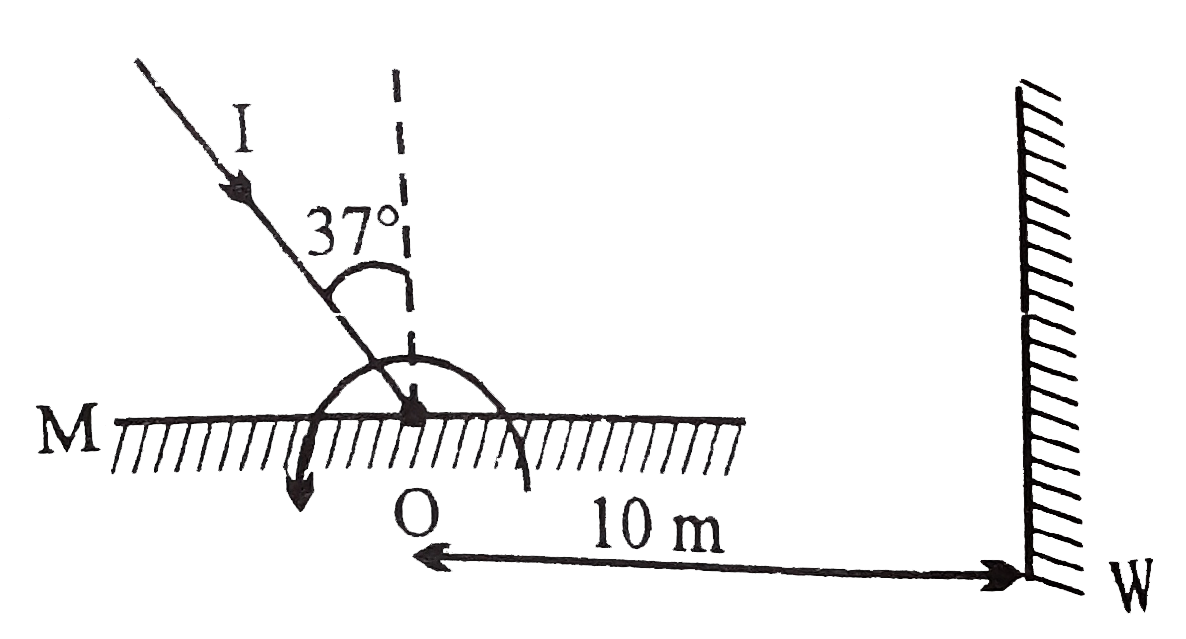 View Solution
View SolutionA point source of light S, placed at a distance 60 cm infront of the centre of a plane mirror of width 50 cm, hangs vertically on a wall. A man walks infront of the mirror along a line parallel to the mirror at a distance 1.2 m from it (see in the figure). The distance between the extreme points where he can see the image of the light source in the mirror is .......... cm.
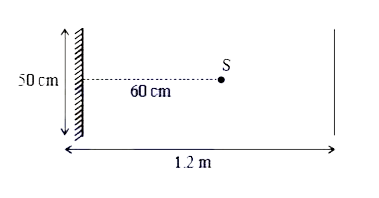 View Solution
View SolutionA body having specific charge 8μC/g is resting on a frictionless plane at a distance 10 cm from the wall (as shown in the figure). It starts moving towards the wall when a uniform electric field of 100 V/m is applied horizontally towards the wall. If the collision of the body with the wall is perfectly elastic, then the time period of the motion will be ______ s.
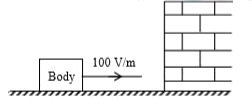 View Solution
View SolutionA particle of mass m moving at a velocity v strikes with the wall at an angle α with the wall and leaves ball making same angle with the wall. Choose the correct statemet (s) from the following.
View Solution

